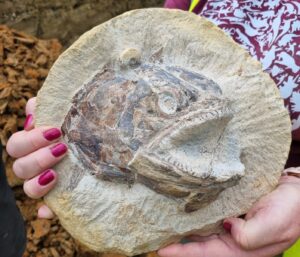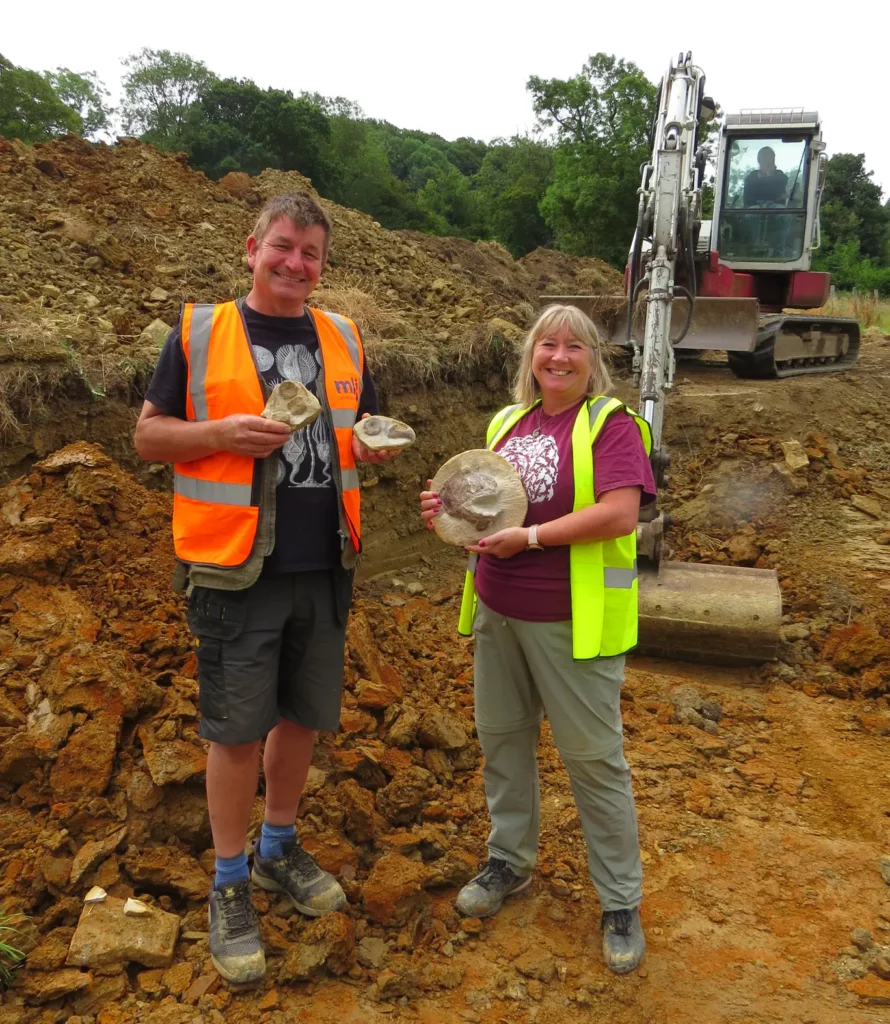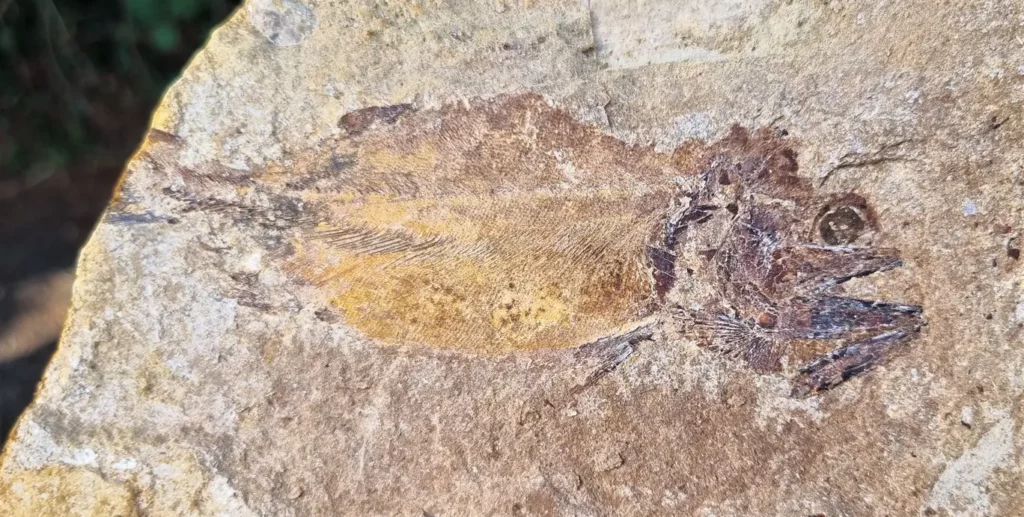
‘Jurassic Farm’ – prehistoric marine world discovered in farmer’s field

A prehistoric site containing the ‘frozen in time’ remains of animals that lived in a tropical sea approximately 183-million-years ago has been discovered in a farmer’s field in Gloucestershire.
The fossils of fish, ancient marine reptiles, squids and rare insects have been unearthed by a team of palaeontologists from an inland rock layer, revealing life from a time when that part of the country was deep underwater.
The site at Court Farm, Kings Stanley near Stroud was discovered by Sally and Neville Hollingworth, avid fossil collectors who recently uncovered the remains of mammoths in the nearby Cotswold Water Park which was featured in the BBC One documentary ‘Attenborough and the Mammoth Graveyard’ in 2021.

“These fossils come from the Early Jurassic, specifically a time called the Toarcian,” explain the Hollingsworths. “The clay layers exposed at this site near Stroud have yielded a significant number of well-preserved marine vertebrate fossils that are comparable to the famous and exquisitely preserved similar fauna of the Strawberry Bank Lagerstätte from Ilminster, Somerset – a prehistoric site of exceptional fossil preservation.
Image courtesy Nigel Larkin.
“Excavations at Kings Stanley over the last week have revealed a rich source of fossil material, particularly from a rare layer of rock that has not been exposed since the late 19th Century.”
Part of the excavation team, palaeontologist and a visiting scientist at The University of Manchester, Dr Dean Lomax, comments: “The site is quite remarkable, with numerous beautifully preserved fossils of ancient animals that once lived in a Jurassic sea that covered this part of the UK during the Jurassic. Inland locations with fossils like this are rare in the UK. The fossils we have collected will surely form the basis of research projects for years to come.”
Field observations and preparation of the fossils found at Court Farm so far indicate that they were buried rapidly, with the layered concretions around the skeletons forming relatively early before the sediments were compacted, as the original sediment layering is preserved. These concretions prevented further compaction and compression from the overlying sediments during burial and thus preserved the fossils in ‘three-dimensional time capsules’.

Image courtesy Dr Dean Lomax
Among the finds were several fossil fish with exceptional details of their scales, fins and even their eyeballs, with one of the most impressive discoveries being a three-dimensionally preserved fish head, belonging to a type of Jurassic fish called Pachycormus. The fish is said to look as if it is ‘leaping off the rock’ that it was contained inside.
Many of the specimens collected will be donated to the local Museum in the Park, Stroud, where they will form a significant part of the museum’s palaeontology collections
It’s not uncommon for the preserved remains of prehistoric marine creatures to be found at inland locations in the UK. In February 2021, the fossilised remains of Britain’s largest ichthyosaur, known as a ‘Sea Dragon’, were discovered at Rutland Water Nature Reserve.
